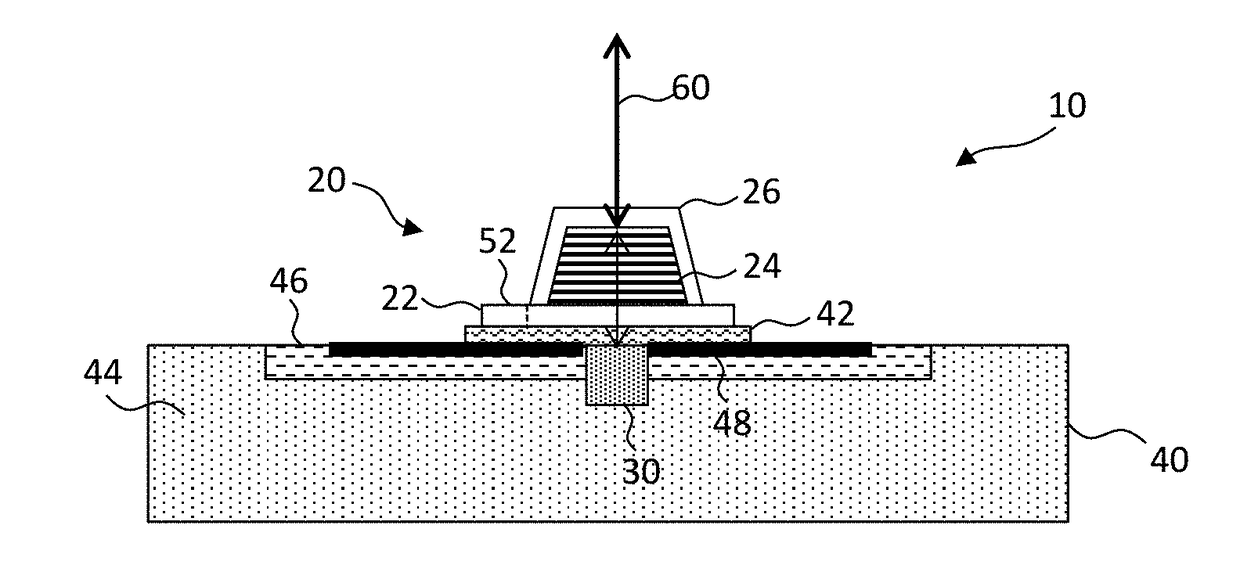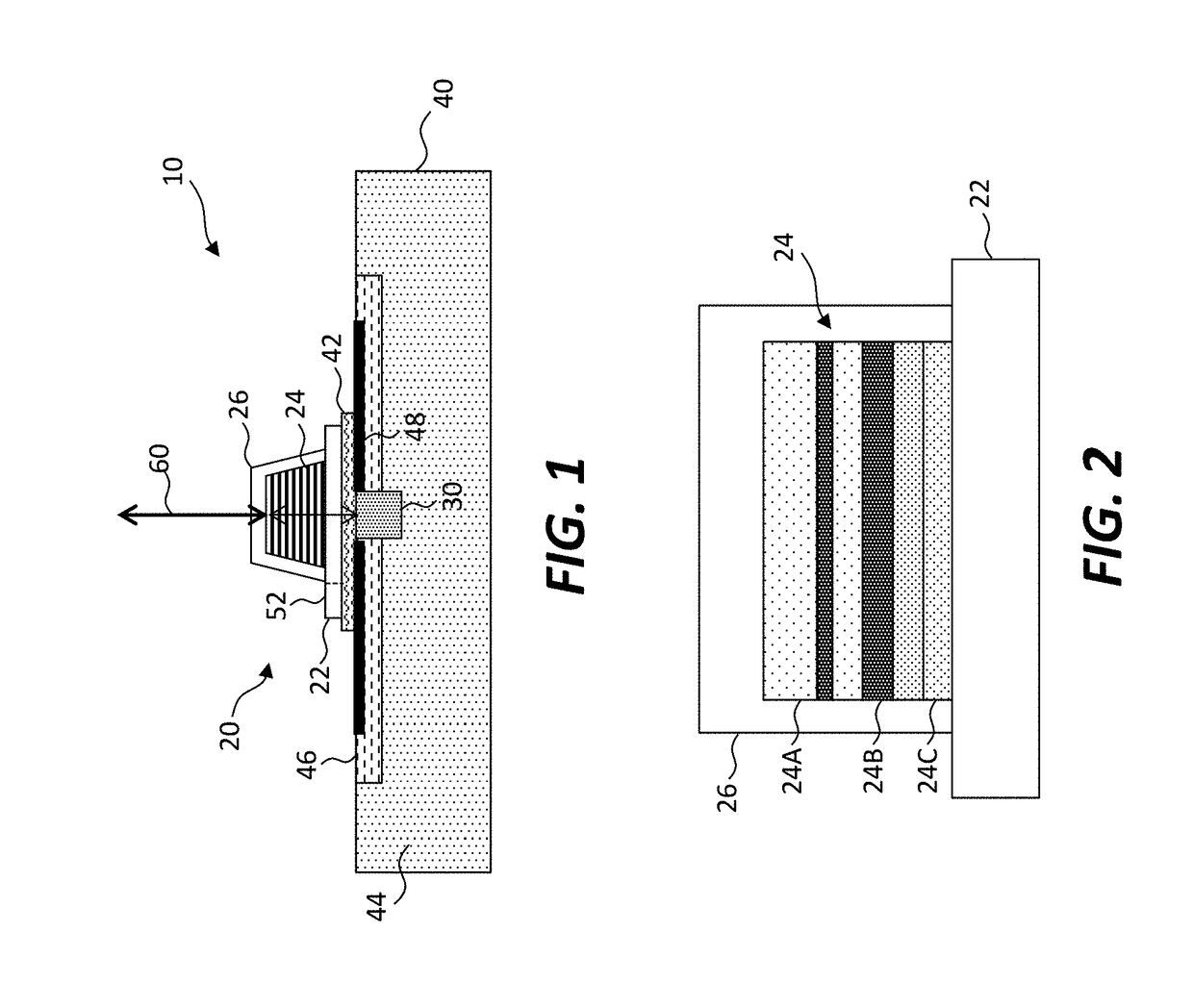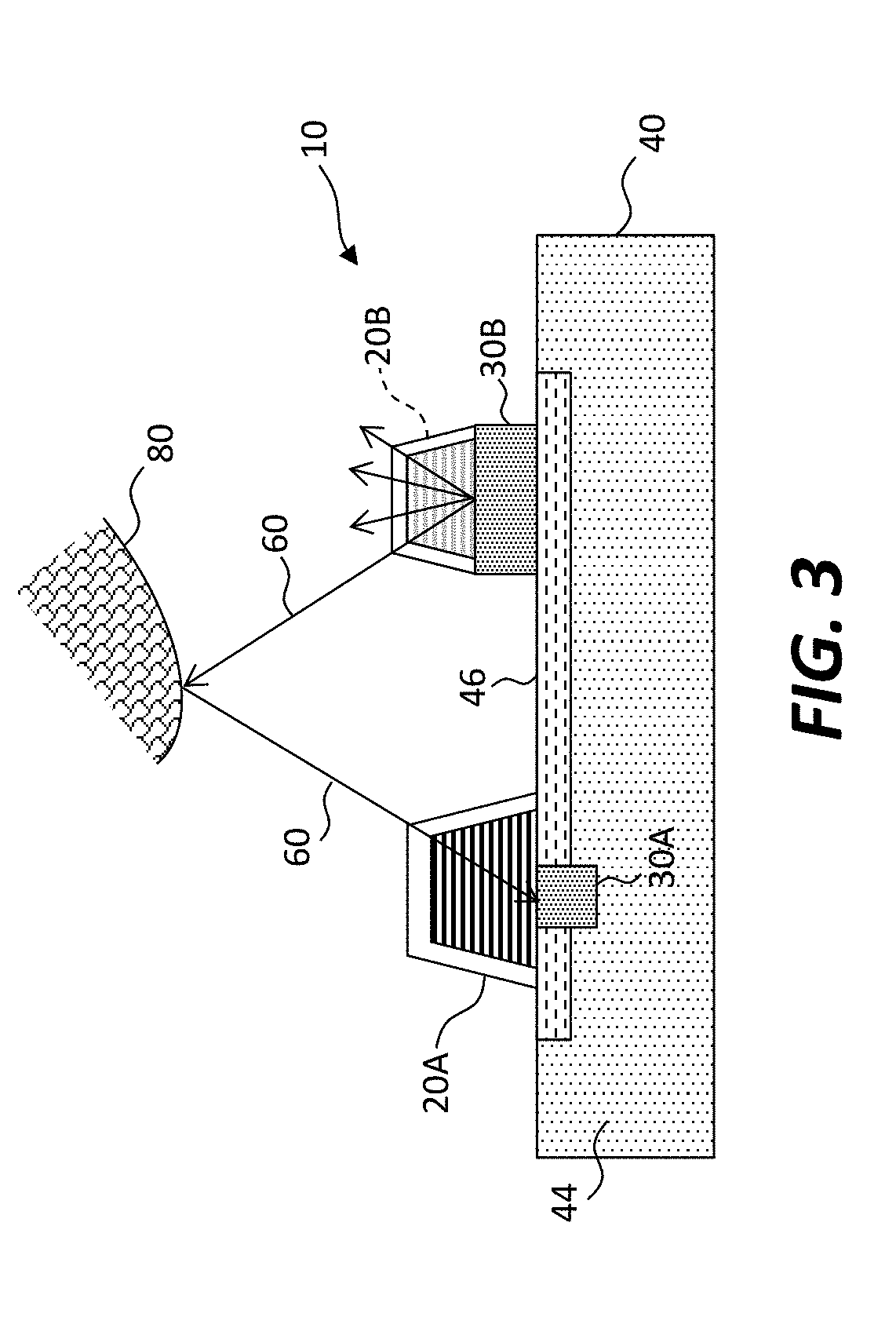Compound micro-transfer-printed optical filter device
a technology of optical filter and micro-transfer, which is applied in the direction of semiconductor devices, instruments, electrical devices, etc., can solve the problems of increasing the elapsed manufacturing time, increasing the waste of materials and time, and increasing the waste of processing time, so as to reduce the amount of wasted optical filter material, reduce the time required for making the integrated component, and the effect of high density of optical filter
- Summary
- Abstract
- Description
- Claims
- Application Information
AI Technical Summary
Benefits of technology
Problems solved by technology
Method used
Image
Examples
Embodiment Construction
[0067]Referring to the cross section of FIG. 1, a compound optical filter device 10 comprises a semiconductor substrate 40 having an optical transducer 30 formed in or on the semiconductor substrate 40. The optical transducer 30 is responsive to light 60 (e.g., incident light illuminating the optical transducer 30) to produce a signal or is responsive to a signal to emit light 60. An optical filter 20 comprises an optical filter substrate 22 separate, distinct, and independent from the semiconductor substrate 40 and one or more optical filter layers 24 disposed on the optical filter substrate 22. The optical filter device is a compound optical filter device 10 because it incorporates two different substrates (e.g., the semiconductor substrate 40 and the optical filter substrate 22). In certain embodiments, the two different substrates include two different materials. The two different materials can have different attributes, can be processed separately, or can be process incompatibl...
PUM
 Login to View More
Login to View More Abstract
Description
Claims
Application Information
 Login to View More
Login to View More - R&D
- Intellectual Property
- Life Sciences
- Materials
- Tech Scout
- Unparalleled Data Quality
- Higher Quality Content
- 60% Fewer Hallucinations
Browse by: Latest US Patents, China's latest patents, Technical Efficacy Thesaurus, Application Domain, Technology Topic, Popular Technical Reports.
© 2025 PatSnap. All rights reserved.Legal|Privacy policy|Modern Slavery Act Transparency Statement|Sitemap|About US| Contact US: help@patsnap.com



